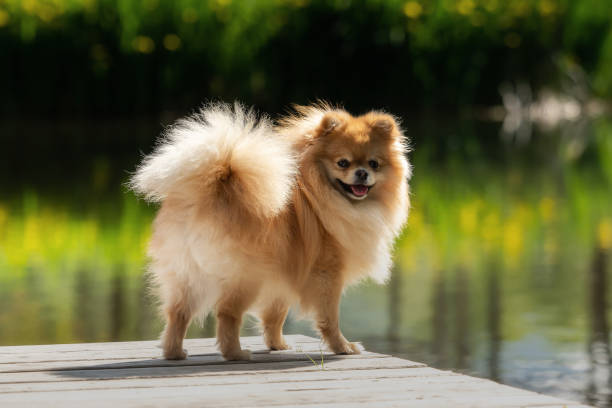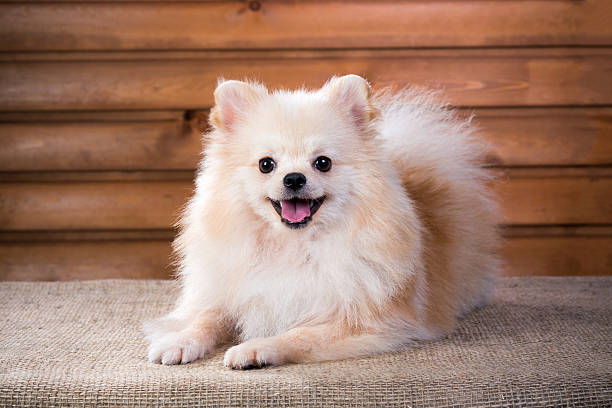German Spitz

Breed History:
The German Spitz is one of the oldest dog breeds in Central Europe, with its origins dating back to ancient times. It is believed to be descended from Nordic herding and guard dogs and is considered the foundation for many other spitz-type breeds, including the Pomeranian and Keeshond. German farmers and villagers valued the breed for its alertness, loyalty, and watchdog capabilities.
Historically, the German Spitz served as a farm guardian and companion, admired for its sharp senses and vocal nature. Over time, selective breeding produced several size variations within the breed, each suited to different roles—from vigilant watchdogs to charming lap dogs. The breed remains popular in Germany and other parts of Europe for its bright personality and distinct appearance.
|
Gender |
Height |
Weight |
|
Male |
23–50 cm (varies by type) |
5–20 kg |
|
Female |
23–50 cm (varies by type) |
5–20 kg |
Size – Varies (Toy to Medium)
Life Expectancy: 13–15 years

Breed Appearance:
The German Spitz has a classic spitz-type appearance: a compact, square build, a profuse double coat, and a plumed tail that curls tightly over its back. The breed features a fox-like face with a pointed muzzle, erect triangular ears, and expressive dark eyes. Its thick fur gives it a lion-like mane around the neck and shoulders, especially in males.
German Spitzes come in various coat colours, including white, black, brown, orange, sable, and wolf-grey. Regardless of the size variation—Klein (Small), Mittel (Medium), or Groß (Large)—the breed maintains the same overall structure and signature features: dense coat, proud posture, and alert expression.
Breed Type – Companion/Watchdog:
Originally bred as watchdogs and companions, German Spitzes are known for their cheerful, lively personalities and intense loyalty to their families. They are highly alert and often reserved around strangers, making them excellent watchdogs despite their small-to-medium size.
The breed is affectionate with family members and bonds closely with its owners. While they can be somewhat independent, they thrive in environments where they receive regular attention, interaction, and mental stimulation. German Spitzes are good with older children and other pets when properly socialised.

Training:
German Spitzes are intelligent and quick learners, but can display a strong-willed or independent streak. Early socialisation and consistent, positive training are key to developing a well-mannered adult. They are highly responsive to reward-based methods, such as treats and praise, and tend to enjoy learning new commands and tricks.
Without proper guidance, they can become vocal or stubborn. Training sessions should be fun and engaging to maintain their interest. Because of their alert nature, early exposure to different people, animals, and environments helps prevent excessive barking or suspicious behaviour.
Health & Care:
The German Spitz is generally a healthy breed with a long lifespan. It is not prone to many serious genetic disorders, especially when sourced from responsible breeders. However, some health issues to watch for include:
-
Patellar luxation
-
Dental problems (especially in smaller varieties)
-
Collapsing trachea
-
Progressive retinal atrophy (PRA)
Routine veterinary checkups, a balanced diet, and regular exercise help maintain the breed’s overall health. Preventive dental care is particularly important in smaller sizes.

Living Conditions:
Adaptable and versatile, German Spitzes do well in both apartments and larger homes. Despite their thick coat, they are well-suited for indoor living as long as they get enough exercise and stimulation. They enjoy being near their humans and are best suited to homes where they’re not left alone for long periods.
While they tolerate cold weather well due to their dense coat, they are sensitive to excessive heat. During warmer months, care should be taken to avoid overexertion and provide plenty of water and shade.
Exercise:
Though not extremely demanding, German Spitzes are energetic and require regular daily exercise. A combination of brisk walks, playtime, and mental stimulation keeps them fit and prevents boredom-related behaviours like barking or chewing.
They enjoy interactive games, puzzle toys, and agility exercises, which help satisfy their sharp minds and active bodies. Consistent activity is essential for maintaining their health and a happy demeanour.
Grooming:
The German Spitz’s luxurious double coat requires consistent grooming to maintain its appearance and prevent matting. Brushing 2–3 times a week is recommended, with more frequent sessions during seasonal shedding periods.
Bathing should be occasional, using a gentle dog shampoo. Regular ear cleaning, nail trimming, and dental care are essential. Despite their thick fur, they have little doggy odour and are generally clean.

Advantages:
-
Cheerful, loyal, and affectionate with family
-
Excellent watchdog with an alert nature
-
Highly intelligent and quick to learn
-
Long lifespan and generally robust health
-
Adaptable to both small and large living spaces
-
Minimal odour and relatively clean for a long-coated breed
Disadvantages:
-
Can be vocal and bark excessively if not trained properly
-
Requires regular grooming to manage its thick coat
-
May be reserved or aloof with strangers without early socialisation
-
Prone to dental issues, especially smaller varieties
-
Independent streak may challenge novice trainers
-
Sensitive to heat due to dense fur

